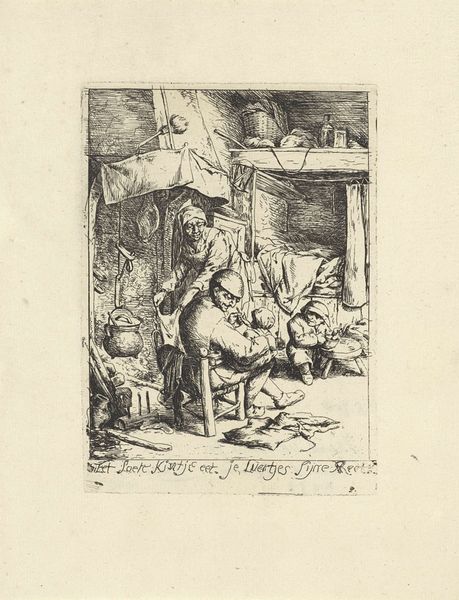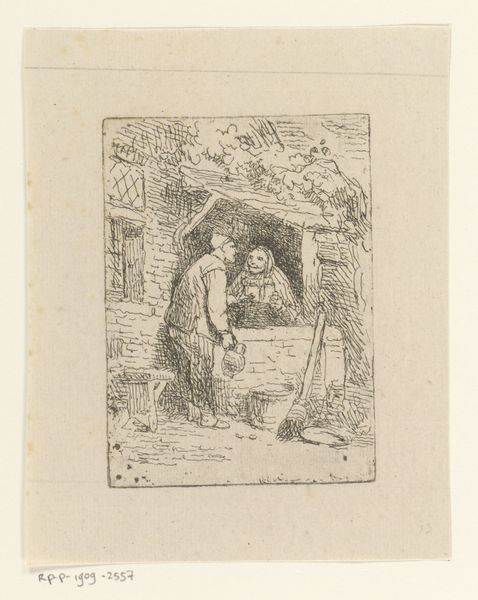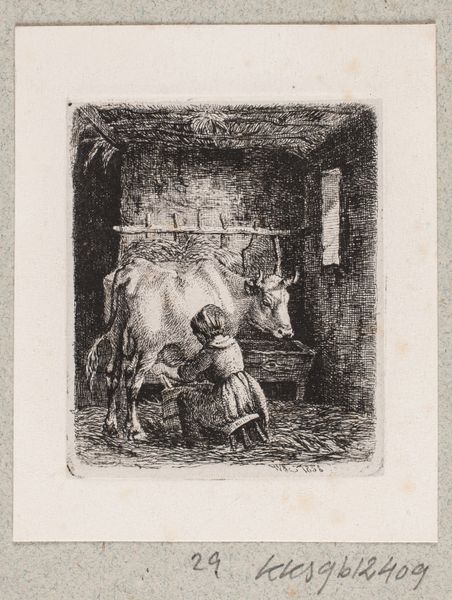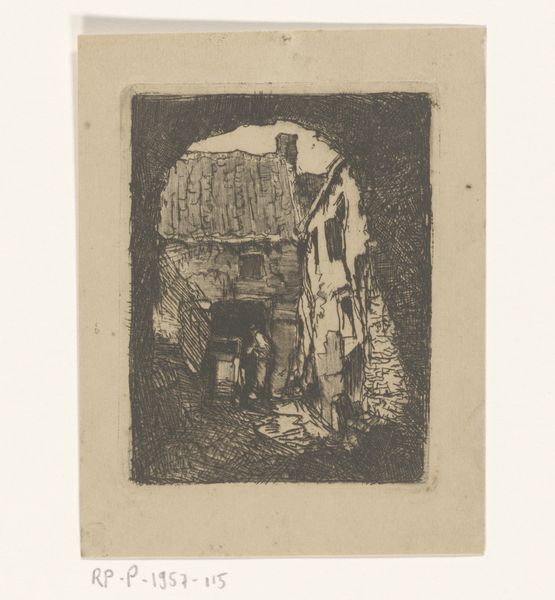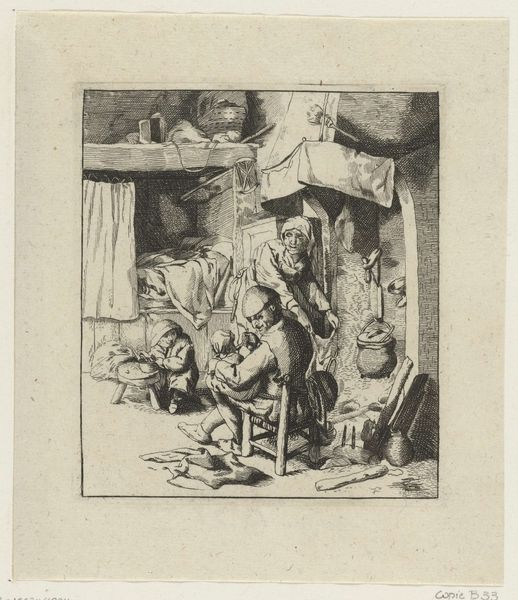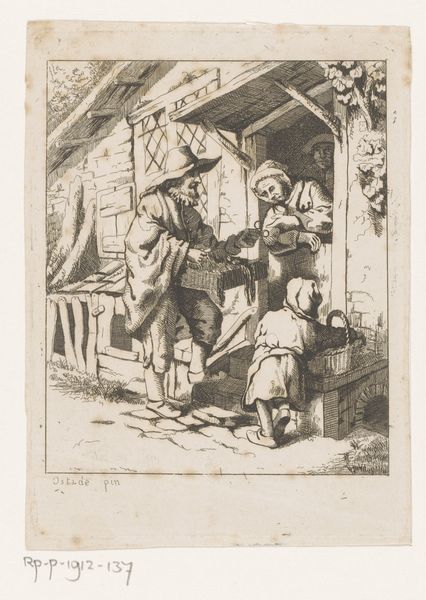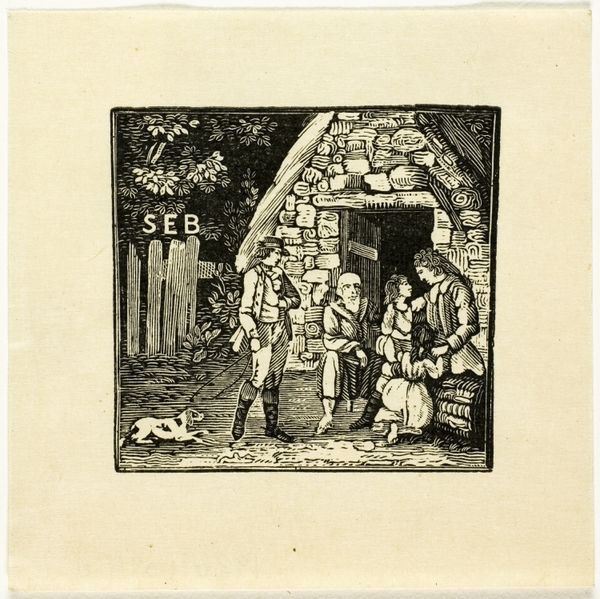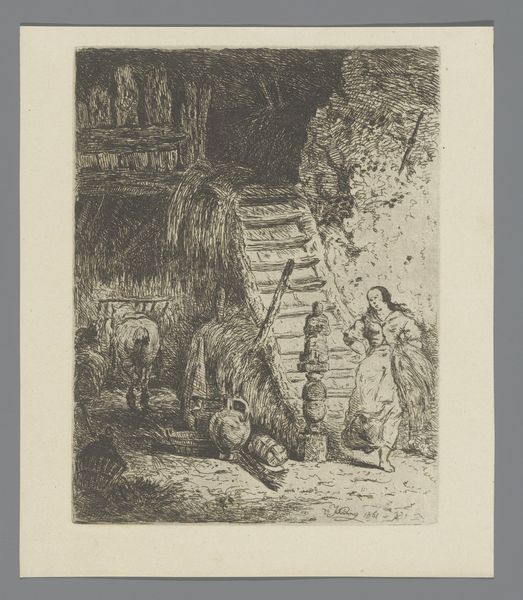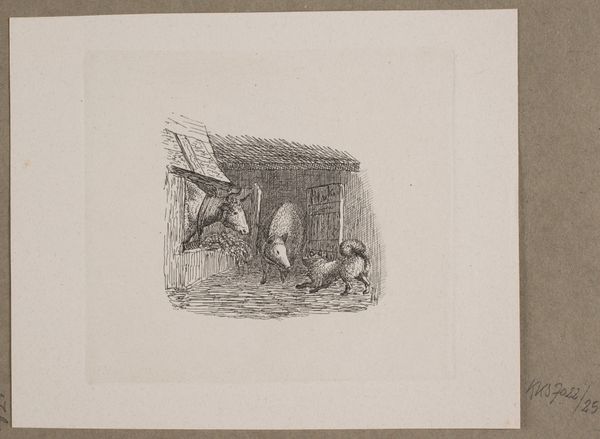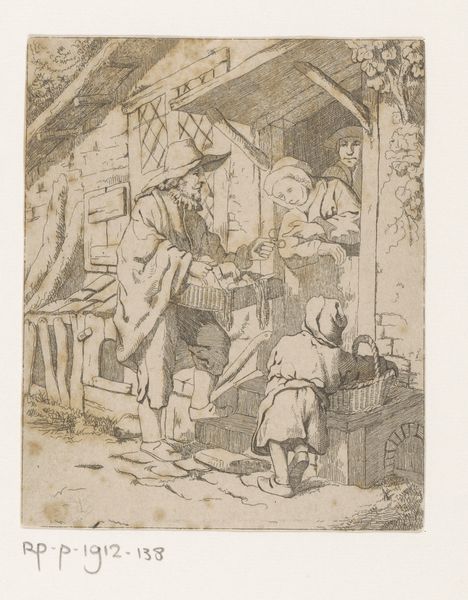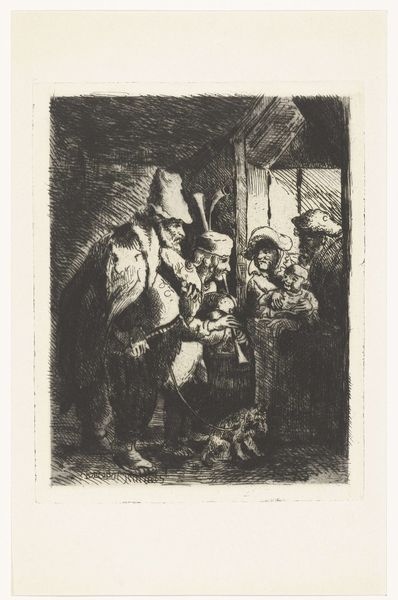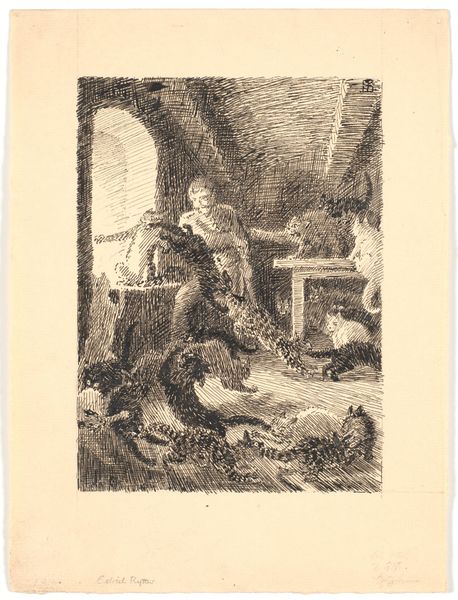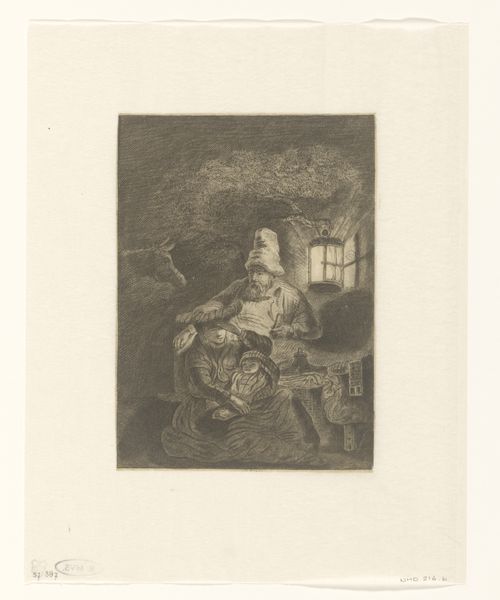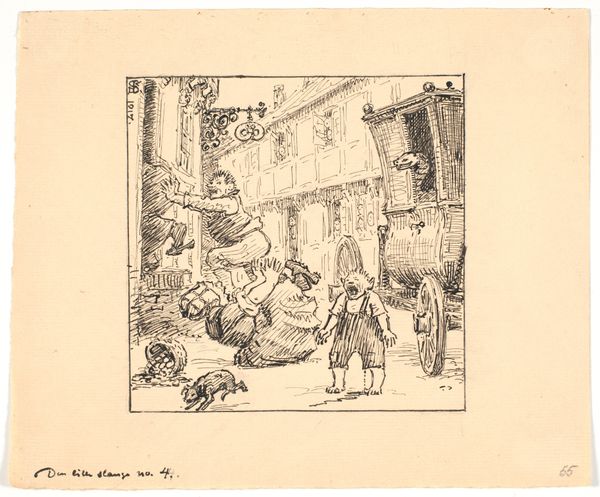
print, etching
#
narrative-art
#
dutch-golden-age
# print
#
etching
#
figuration
#
genre-painting
Dimensions: height 108 mm, width 92 mm
Copyright: Rijks Museum: Open Domain
Curator: This is "Brillenkoopman," an etching made in 1699 by Jacob Laurensz. van der Vinne. Editor: It's such a detailed little scene. I'm immediately drawn to the grittiness of the etching, the way the lines create shadows and textures. There's a definite mood here, a sort of... wary interaction happening. Curator: Absolutely. "Brillenkoopman" translates to "Spectacles Merchant," and we see exactly that: a travelling salesman, door to door. Etchings like these in the Dutch Golden Age weren't just art, they were documents of daily life, glimpses into ordinary professions. Notice the window—the diamond pattern evokes a sense of established domesticity contrasting the itinerant nature of the merchant. Editor: He looks rather burdened, actually, weighed down by that tray. There’s something subtly unsettling about the woman in the doorway, too, peering down. Almost makes you wonder what she's seeing – or perhaps what she *isn't* seeing so well these days that makes her a customer! Curator: That uncertainty is key. Consider spectacles as symbols in 17th-century art. On one hand, they represented learning, intellect, and discernment. On the other, they signified failing vision, vanity, and even the deception of appearances. Editor: Ooh, I love that tension! Deception of appearances... The child standing by the merchant, holding a basket, could be an apprentice learning a trade. Is it hopeful or exploitative? Curator: The artist leaves those questions unanswered, encouraging the viewer to project their own interpretations. The choice of etching further informs meaning: as a reproducible image, this invites wider dissemination of the scene's moral ambiguities to a broader audience than a singular painting might. Editor: True! And the contrast of the dark lines with the pale paper intensifies that ambiguity. Everything is sharp and clear, yet we're left feeling like something is slightly… askew. The spectacles could correct vision, but this picture shows that they may simply amplify social uncertainties. Curator: It makes us contemplate the human condition then and now. Editor: Yeah, and what we *choose* to see. I think I will walk away pondering which lens am I seeing things through?
Comments
No comments
Be the first to comment and join the conversation on the ultimate creative platform.
